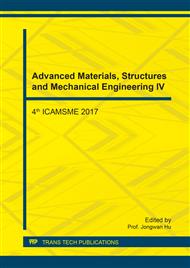p.164
p.170
p.176
p.193
p.198
p.203
p.208
p.212
p.220
The Influence of Compaction Effort in Laterite Soil with the Appearance of Sodium Bentonite as a Soil Liner
Abstract:
Soil liner which is placed at the foundation of a landfill is very important in order to isolate waste materials and leachate from the environment. However, if not properly managed, the leachate can beriskytothe safety and serviceability of which are directly related to the environment and public health issues. Soil liners were proposed to minimize leachate egress and prevent ground pollution. In soil liner design, it is important to compact the layer properly in order to achieve low hydraulic conductivity and high strength of soil. In this study, different percentages of sodium bentonite were added to laterite soil to act as soil liner to stabilize the liner system. Sodium bentonite can easily absorb water more than a hundred percent of its weight. Thus, the sodium bentonites were chosen to be mixed with laterite soil. The differentpercentagesof sodium bentonite used are 5%, 10%, 15% and 20%. This research was carried out asan attempt to see the compaction effort for laterite soil mixedwith sodium bentonite. The outcomesof this study give positive results due to the potential of sodium bentonite to fulfill spaces in between soil particles. It is also found that sodium bentonite influences the resistance properties, hydraulic conductivity and the strength of soil.
Info:
Periodical:
Pages:
198-202
Citation:
Online since:
November 2017
Keywords:
Price:
Сopyright:
© 2017 Trans Tech Publications Ltd. All Rights Reserved
Share:
Citation:


